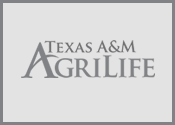
Calvin Trostle, Ph.D., Professor & Extension Agronomist, TAMU Dept. of Soil & Crop Sciences, Lubbock, (806) 746-6101, ctrostle@ag.tamu.edu Late-Season Texas Wheat: Irrigation Timing & Termination An updated document of the same title has been posted to http://lubbock.tamu.edu/wheat. Late and end-of-season decisions for how much irrigation water to apply (if available) and stage of growth are discussed. Crop yield potential and the cost of further irrigation is considered. Remaining available soil moisture is a significant factor. In general, a simple summary for irrigation termination in wheat or another… Read More →